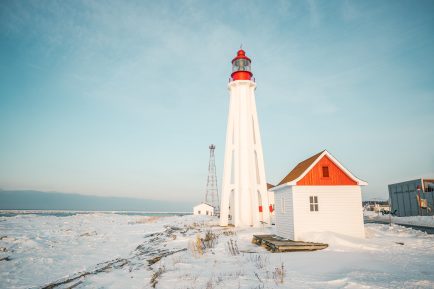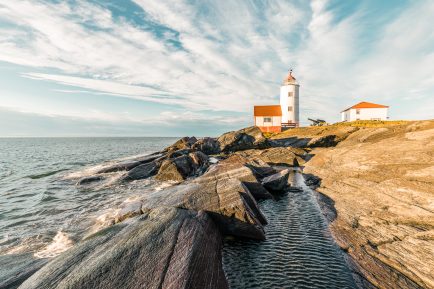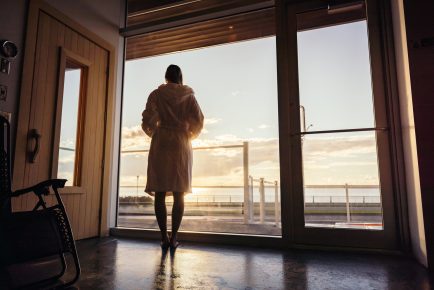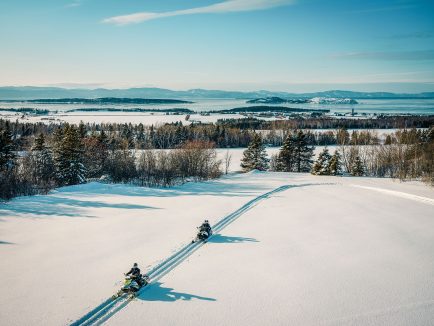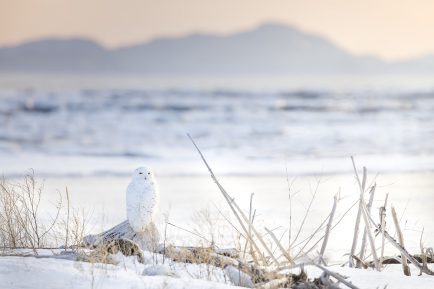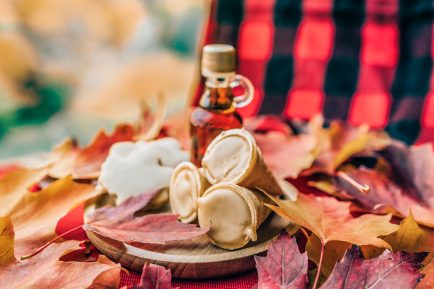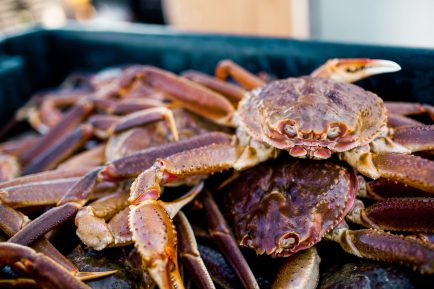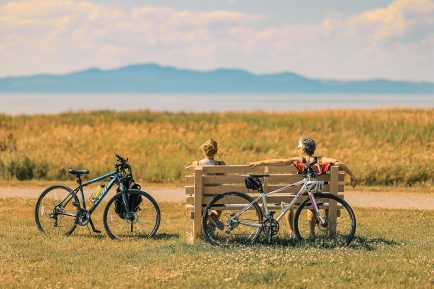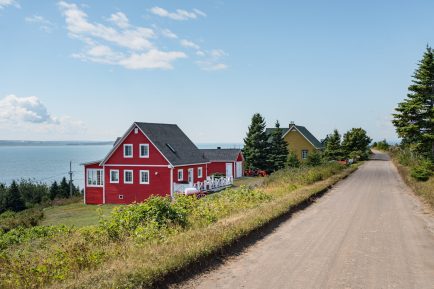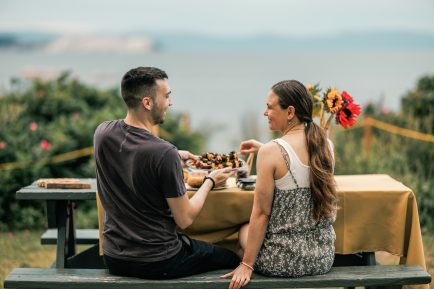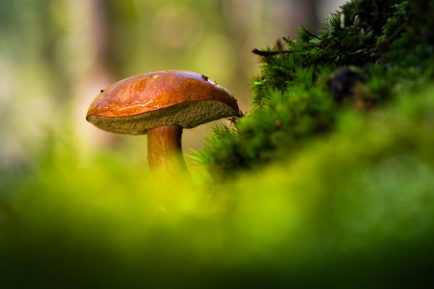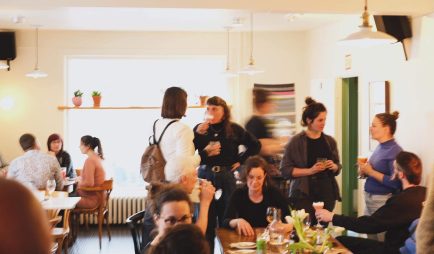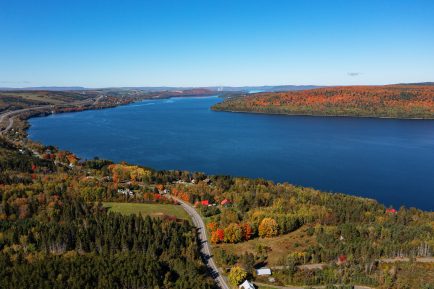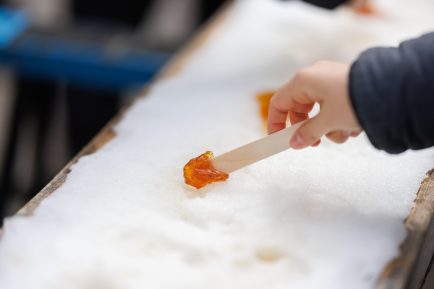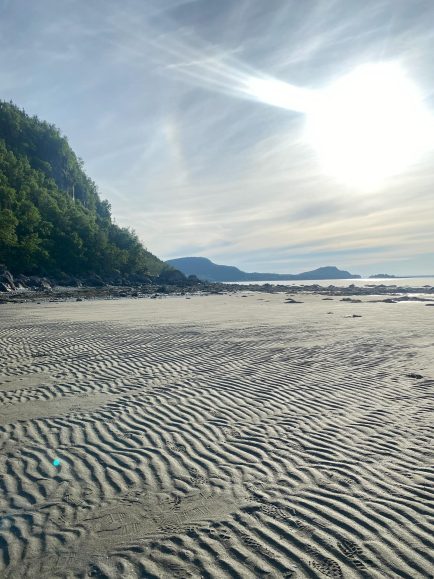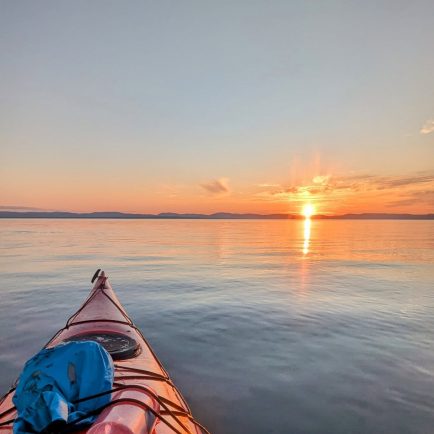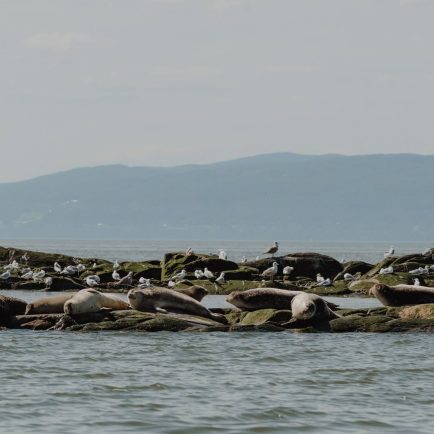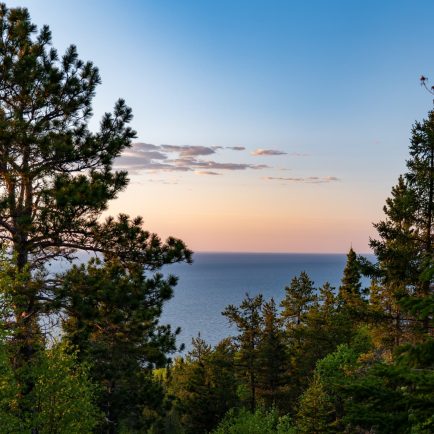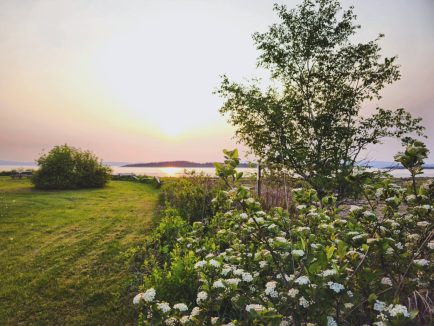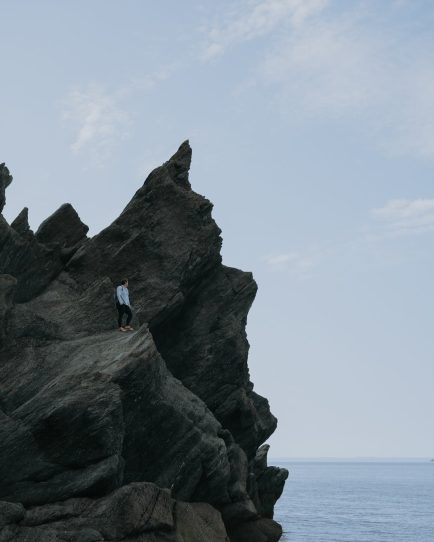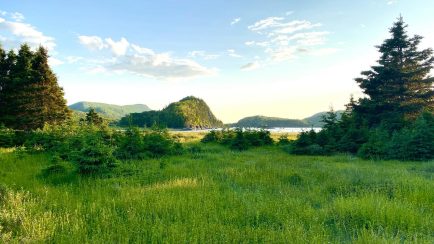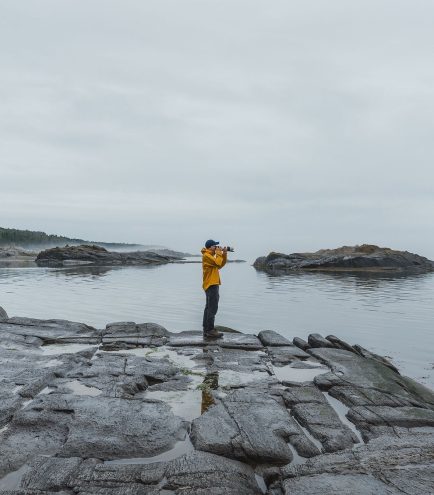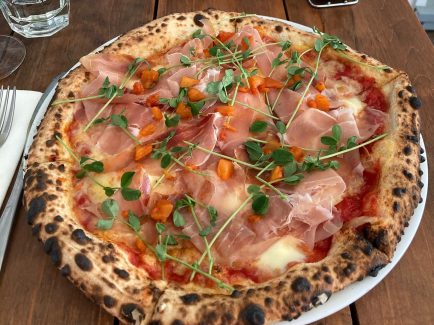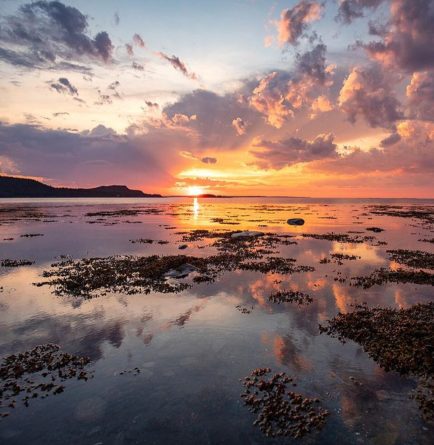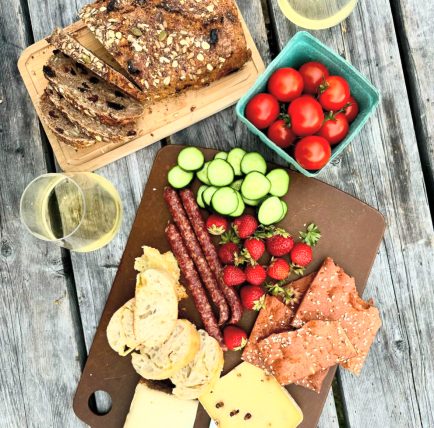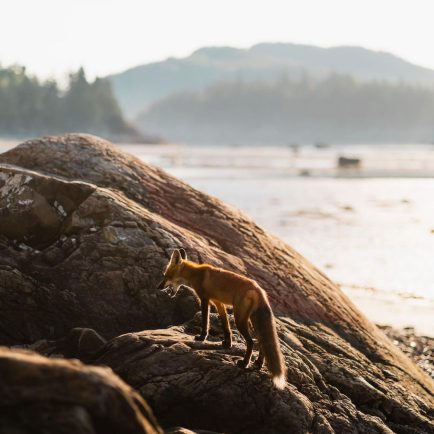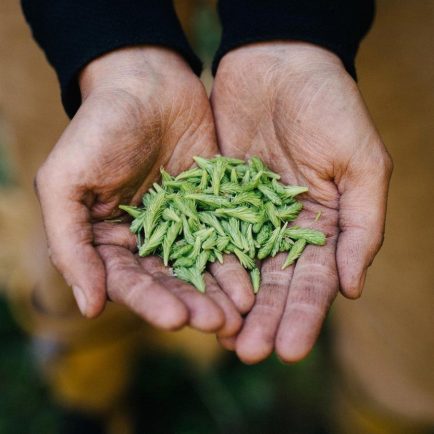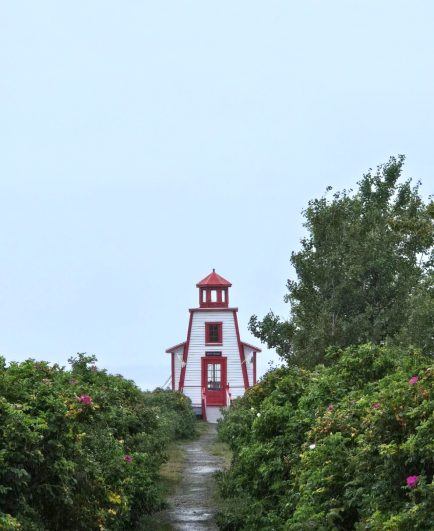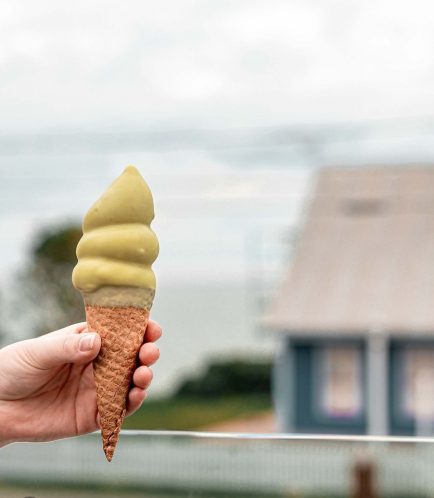My Favorites
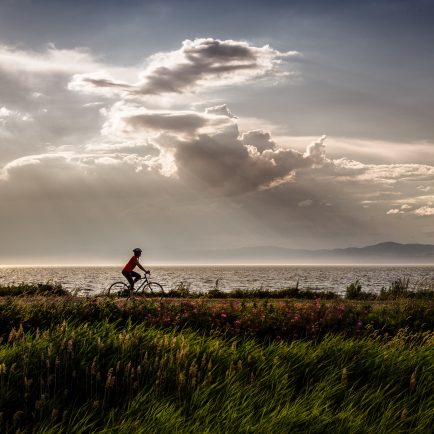
30 km of Cycling, River and Culture

Writing
Brïte Pauchet, happy to live in Kamouraska, where she can combine many of her passions and share them.
Arriving in the Bas-Saint-Laurent via the Route verte means feeling very small between the river and the cabourons, smelling the sea and riding on the plain with the wind at your back.
For me, cycling has always been a place of contemplation. Today, I’d like to take you on a linear tour of western Kamouraska, a mix of scenery, culture and heritage.
First stop: the Maison du Kamouraska
Accessible by bike or car, the Maison du Kamouraska is a must-see, especially if you want to learn more about our beautiful region. Where to sleep tonight? What are the residents’ favorite cycling routes? Are there any activities not to be missed? Our attendants look forward to meeting you and meeting your needs.
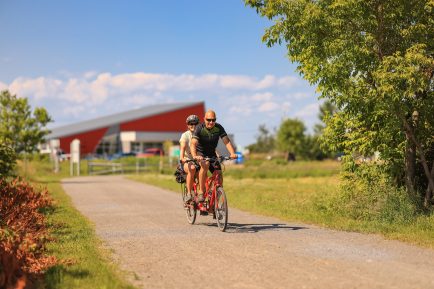
The building is also home to the Halte marine de La Pocatière. Here you can discover the riches of the Grande-Anse salt marsh and its biodiversity.
Finally, the Akamaraska film offers a 360° immersive look at our beautiful region, and introduces you to our producers, artists and craftspeople. You’re sure to come across them along the way.
From here, you can head east to Rivière-Ouelle along a magnificent stone dust bike path, the Grande-Anse bike path.
Not so ancient history
5 km away, the Route verte continues on Route 132. A little further on, enthusiasts can rest their calves in the treasure trove that is Antiquités du Kamouraska. Objects from various eras, antique furniture, post-war liqueur posters, local surprises… Not always easy to fit in your pocket, but you can always come back or ask the owner if he can accommodate you.
Across the river, École Delisle, the “little pink school”, has retained its old-world charm. The décor is period (1931-1965), with antique desks, textbooks and various objects linked to the daily life of the schools.
This institution has marked the childhood of several generations and served as the filming location for the soap opera Cormoran.
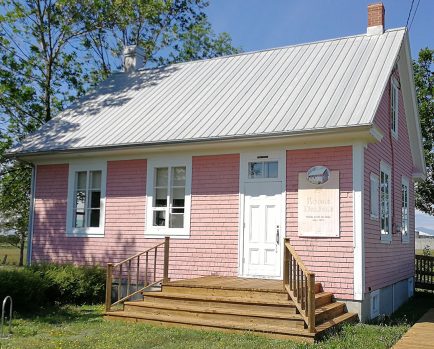
Detour to Pointe-aux-Orignaux
and Pointe-aux-Iroquois
Just a few pedal strokes from École Delisle, the Route verte suggests you leave the 132 for a more leisurely route: the Chemin de la Petite-Anse.
I’d like to suggest an additional, round-trip detour: a visit to Pointe-aux-Orignaux and Pointe-aux-Iroquois, the first sites to be designated “cultural heritage landscapes” by the Quebec government.
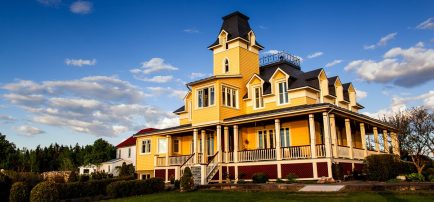
To get there, take the Route du Quai, then the Chemin de l’Anse-des-Merciers eastward. And there, breathe. If you’re hungry or want to meet local people, head for the Chapelle du quai.
The chapel houses a cosy café where you can relax and enjoy sandwiches, salads or mignardises. You can also discover the products of local artisans. In summer, the church hosts exhibitions, conferences, documentary screenings and musical performances. The presbytery, meanwhile, has been converted into holiday accommodation, still managed by the local guild.
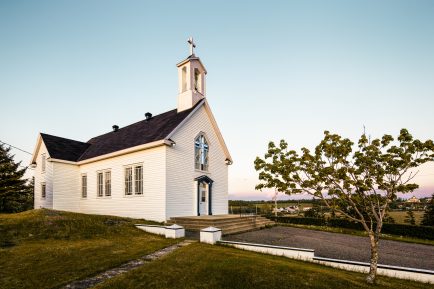
From chapel to Chapais
It’s here that you need to retrace your steps to reach Chemin de la Petite-Anse, still heading east. When you reach Saint-Denis-De La Bouteillerie, its name changes to Chemin de la Grève Ouest.
Depending on inspiration, tide and weather, you may be tempted to take a dip in the river at Chapelle de la Grève, a popular spot for locals. Afterwards, you’ll have to work your thighs and calves on a short but steep section of the Route de la Grève, which takes you into the heart of the village.
Right next to the church, La Maison de Jean-Baptiste is a delightful gourmet stop. Housed in the former presbytery, its café serves lunch, dinner and snacks, to be enjoyed on the gallery or indoors.
Accredited by Bienvenue cyclistes, La Maison de Jean-Baptiste has 5 renovated rooms with an unmistakable cachet. A living room with piano, a dining room with a touch of yesteryear and a common room with modern facilities are also available.
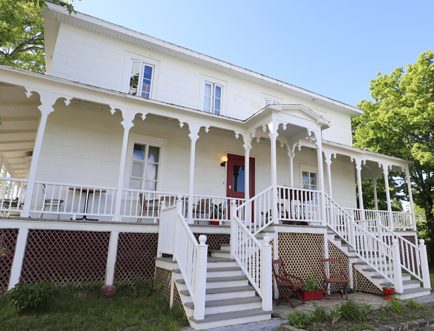
Finally, the beautiful white house with red roofs is Maison Chapais. This sumptuous Victorian residence was built in 1833 for Jean-Charles Chapais, founder of the parish of Saint-Denis-De La Bouteillerie, wealthy merchant and future Father of Canadian Confederation. Visitors can tour the house and gardens, which include an interpretive trail and sculpture garden.
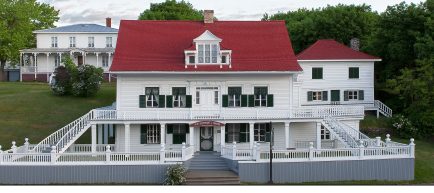
La Maison de Jean-Baptiste - Café
5, Route de l'Église,
Saint-Denis,
Québec G0L 2R0
T. 4188942213
La Maison de Jean-Baptiste - Hébergement
5, Route de l'Église,
Saint-Denis,
Québec G0L 2R0
T. 4188942213
Did you like this article?
You might also be interested in these
@BasSaintLaurent
Include the #BasSaintLaurent hashtag on your posts or tag us when you share your favourite photos and highlights of your trip!

